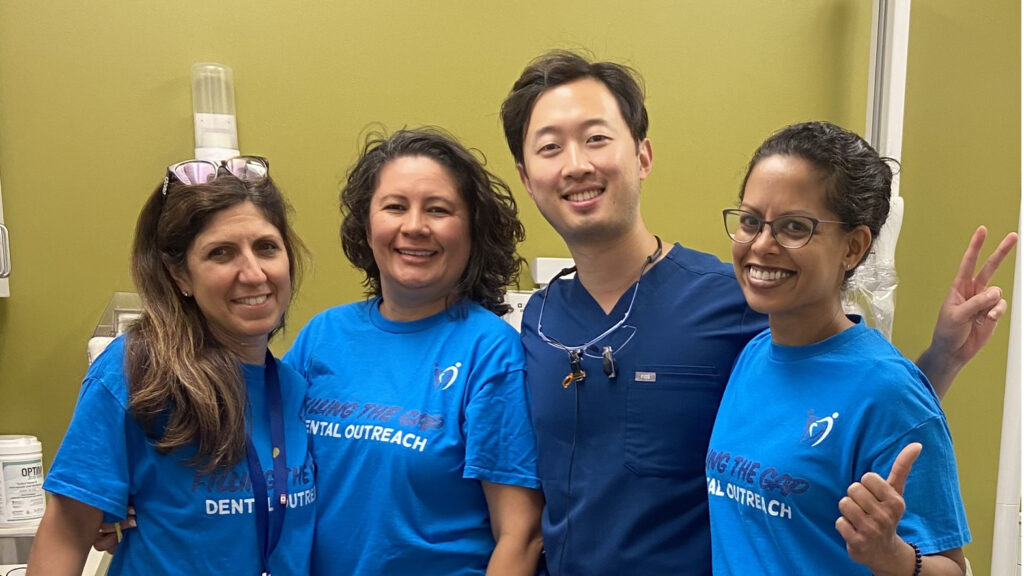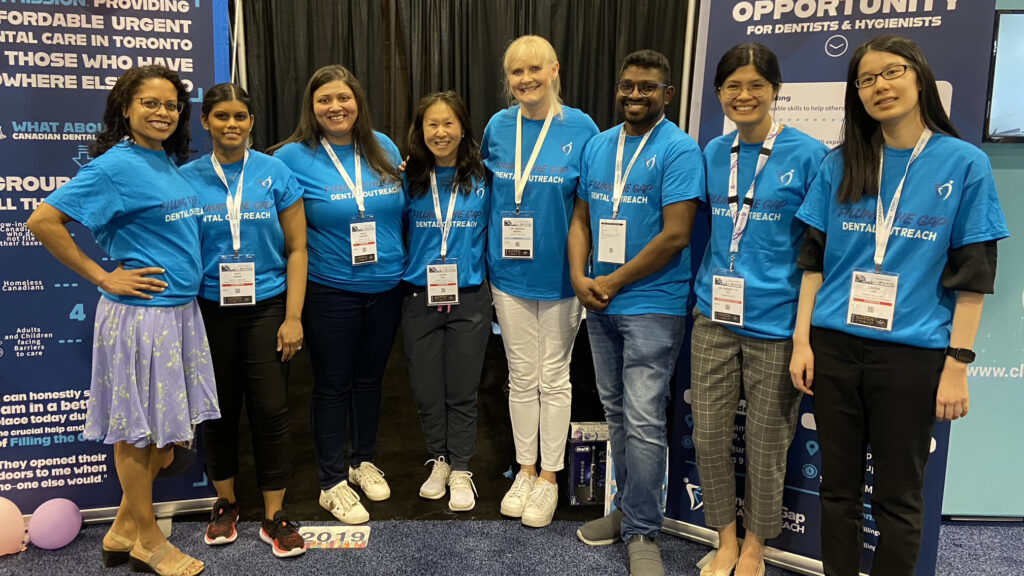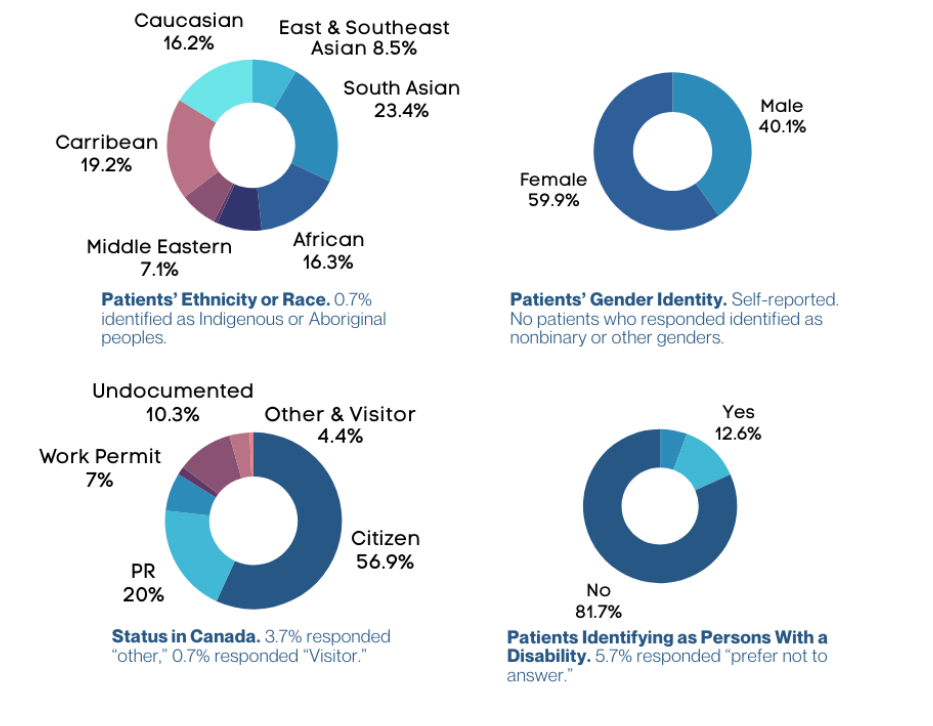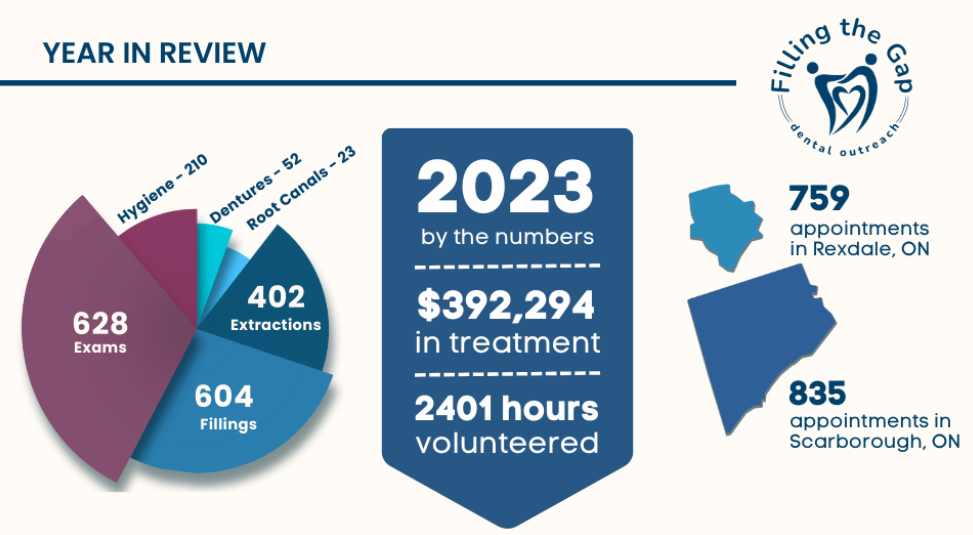
Dr. Hyun Nam, a 2021 University of Toronto graduate and associate dentist in Markham, finds his “greatest satisfaction” when a patient says, “The pain is gone. I can eat again.” What sets this emergency patient apart is that Dr. Nam’s work to help him isn’t paid — it’s pure volunteerism at the non-profit Filling the Gap Dental Outreach.
Since its inception in 2007, the organization has been helping vulnerable people in the Greater Toronto Area (GTA) who fall through the cracks of the public healthcare system.
Statistics Canada estimates that one-third of Canadians do not have dental insurance, while Public Health Ontario reports that about 20% of people in the most populous province did not visit a dentist in the past three years, citing cost as a barrier.
“The impact is huge,” says Dr. Sanjukta Mohanta, who was hired in July after volunteering with the non-profit since 2022. “We’re providing urgent care to people in pain,” she adds.

The non-profit doesn’t advertise its much-needed services. Instead, it receives “dozens” of calls daily. “The way people find us is online through social workers and through Toronto Public Health,” explained Dr. Mohanta.
In 2023 alone, dentists and hygienists at Filling the Gap Dental Outreach volunteered 2,401 hours, responding to 1,594 emergency visits, restoring 604 teeth, performing 402 emergency extractions, and 210 dental cleanings.
“I wish we could help more people,” said Dr. Mohanta, who also has another part-time job at a pediatric office. “We just screen them to let them know that we’re providing urgent care, so we’re not going to provide things like implants or orthodontic work. You see patients who cannot go to a regular dentist because they can’t afford it. They’re not on public dental programs.”
New Canadian Federal Plan Isn’t Enough
Even with the advent of the Canadian Dental Care Plan (CDCP), people are continuously falling through the cracks of the system.
“The CDCP is going to help a lot of people, but it’s not going to help everyone,” said Dr. Mohanta. “For example, you must file taxes to apply for CDCP. Not everyone files taxes.”
The Canada Revenue Agency reports that around 10% of Canadians fail to file their taxes each year. As a result, they will not receive the benefits for which they are otherwise eligible. Additionally, CDCP won’t cover newcomers who have not filed taxes for the previous year or low-income and uninsured Canadian workers.
Majority of Patients Have Disabilities
Filling the Gap shares the demographics of its patients to provide a perspective in its annual report for 2023, which shows that the non-profit served approximately 57% Canadian citizens, 20% permanent residents, 10.3% undocumented individuals, 7% work permit holders, and 4.4% visitors or others. All patients come from various ethnic backgrounds.
Notably, about 81.7% of its patients identify as persons with disabilities, further highlighting affordability and access as significant problems. Statistics show that Canadians with disabilities are twice as likely to live with low income during their working years, with their single largest source of income being social assistance.

More Funding and Non-Profits Needed
To continue their work, receiving donations is key for this grassroots organization. In 2023, it delivered $392,000 worth of essential dental treatments but received only about $72,015 in donations.
With 10 paid staff and 40 volunteers, including more than 20 dentists, the organization can continue its vital work.
“The reason why we were able to survive is because we get a public health clinic when they don’t use it,” said Dr. Mohanta.
The charity operates at two locations. The first is in Scarborough, where it opened its doors in 2007, utilizing three operatories donated by the Canadian Centre for Refugee and Immigrant Healthcare. This location is open from Monday to Friday, from 9 AM to 2 PM. The second location is in Rexdale, where they occupy the Toronto Public Health Clinic on Tuesday and Thursday evenings and Saturdays when the clinic is not in use.
“We would like other places to copy our model so that more people can get free and discounted dental care at public health clinics across Canada,” said Dr. Mohanta, who was hired at Filling the Gap after the non-profit received a donation from the Accerta Health Access Foundation Grant.
“Our goal is to spread the word that not everyone can afford dental care, even with CDCP support.”

Volunteers Have a Deep Desire to Help
Dr. Mohanta, a 1999 graduate of the University of Toronto, was inspired to volunteer as a dental student after a young Black man died of a tooth infection, highlighting a “health equity” issue. Even while rushing himself to the emergency room, the man faced discrimination as security was called to tackle him.
“Then I thought, ‘Oh, wow,’ not only do we have issues of people who can’t afford dental care, but also there are some populations who get discriminated against, who don’t feel comfortable using the healthcare system because of the way they’ve been treated.”
Dr. Nam also has a story that ignited his need to volunteer. During his residency in New York’s community clinics, he witnessed a “huge lineup” due to a subsidized program offering patients cheaper rates.
“You see a whole range of people needing very urgent dental care and working at Filling the Gap kind of reminded me of that situation again here,” he said. “Compared to private practice, working at Filling the Gap, you see the urgency. Most of them are coming because they’re in a lot of pain.”
Overall, Dr. Nam works five days a week and Saturdays once a month but still finds time to volunteer at Filling the Gap in Rexdale on Saturdays when the opportunity allows.
You Can Volunteer Right at Home
Dr. Nam encourages new grads to volunteer at Filling the Gap, as they will gain more technical skills while helping people in pain. He found out about the non-profit through a spring convention for the Ontario Dental Association (ODA).
“I’ve always wanted to volunteer,” he said. But he initially thought that the main volunteer opportunities for dentists were overseas in countries like Guatemala or Mexico.
“I haven’t had the time to sign up for those yet, but when I saw there were local opportunities, I got interested, talked to the volunteers there, and that’s how it started.”

